This Art Show Is Taking the Literal Pulse of America
Artist Rafael Lozano-Hemmer uses biometrics to make breathtaking spectacle
/https://tf-cmsv2-smithsonianmag-media.s3.amazonaws.com/filer/fe/45/fe45d0af-4564-41ff-bfa7-e0c05becd270/pulsetank04.jpg)
Grab the posts in the new interactive exhibit at the Hirshhorn Museum and Sculpture Garden and in seconds, the lights will go dark. A large incandescent bulb before you will flash in the rhythm of your own heartbeat that you will also be able to hear.
Then the hundreds of bulbs in the entire room will pulse in the same pattern. Soon, the pulse you have registered will be relegated to a smaller bulb, the latest in a line of hundreds above whose rhythms were made before you. The combined beats making a pervasive, ominous din.
And when the next person grabs hold of the posts, her pulse will dominate for a few seconds, and your pulse will move down one.
“It’s this idea of amplifying this most intimate electricity in our bodies to the size of the architecture of the building,” says Rafael Lozano-Hemmer, the Mexican-born artist from Montreal about Pulse Room, one of three major installations filling the museum’s second floor galleries inches show Pulse.
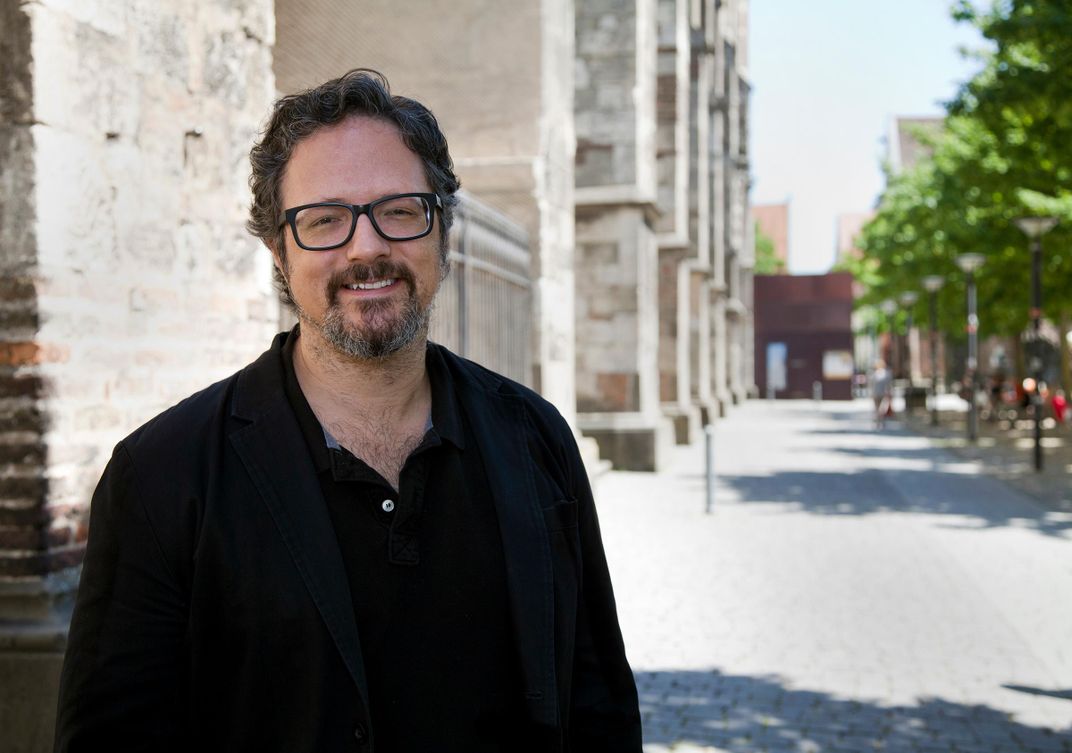
The three works constitute the largest interactive technology exhibition at the Hirshhorn to date. Each requires the input of the visitor to activate it, says museum director Melissa Chiu, “because in some ways, without the visitor, the work wouldn’t exist.”
“Rafael Lozano-Hemmer: Pulse” begins with fingerprinting. In the 2010 Pulse Index, visitors place their index finger in a device that detects heart rates and displays the fingerprint on the wall in a huge projection.
In addition to the ridges and swirls, one might never know how sweaty one’s own finger may be without the super-magnification. “This artwork is a little bit gross in the sense that you’ll see some dust or some sweat or whatever because it’s such a close view,” Lozano-Hemmer says.
As in Pulse Room, the viewer’s heart rate is displayed as the projection shows the beat pulsing behind the fingerprint. As new visitors record their prints, past prints are methodically moved down, one by one, to smaller and smaller grids. Because the room is huge, at any one time there are 10,000 fingerprints displayed.
“The project is kind of like taking a portrait and turning it into a landscape of images,” the artist says.
Lozano-Hemmer is aware of the hesitancy some may have to supply a fingerprint during an era of widespread surveillance in a building four blocks from FBI Headquarters. “We live in an era where a fingerprint lets you into your country, or it lets you into your phone,” he says. “But how can we pervert that? How can we misuse these technologies of control to create connective, poetic or critical experiences? That’s what this show is about.”
The fingerprints or pulses in the works aren’t recorded or kept, he says. “There is absolutely no tracking of an individual. No one is asking you for your name.” And as a new giant fingerprint pushes all previous fingerprints down one space, a teeny one on the end is pushed off and erased.
“In other words, this is not a repository or an archive of these fingerprints but it’s rather just a flow. We call it a memento mori, because it’s just a reminder that we’re here for just a little bit of time,” the artist says.
It’s the largest iteration of Pulse Index, first shown at the Sidney Museum of Contemporary Art in Australia in 2010. And if it reflects a city-size of individuals, the second work, the tranquil Pulse Tank shows possible interactions between people.
First premiered at the Prospect 1 New Orleans Biennial in 2008 and representing Mexico in the Venice Biennial the following year, it again takes a pulse from visitors, which is transmitted to a bar pulsing the same rhythms on a shallow pool of water. Its ripples eventually cross the tank and are reflected onto the blank walls like a video. But when someone stands on the other end of any of the three tanks in the room, and records a pulse, the two eventually intermingle in center of the pool to create complex intersecting patterns.
“It is in connection to other heartbeats that the piece becomes more interesting,” Lozano-Hemmer says. Likewise, the intersecting sounds of the pulses he likens to modern music “that repeats, but that’s slightly offset and creates its own symphonies—this kind of rhythmic or arrhythmic or syncopating beats.”
Also the largest version of Pulse Tank, its tanks had to be curved and calibrated specially so that the screens on the curved museum walls could appear straight. “And you think, ‘Oh, that’s easy.’ No! It was horrible,” he says. “It really is hard.”
“Someone has already asked me about the potential diagnostic value of this work,” Chiu says.
It’s negligible, though Lozano-Hemmer adds that an assistant’s father was alerted to arrhythmia after testing out Pulse Room.
A fourth work by Lozano-Hemmer in Washington currently can be found a mile and a half north, at the Mexican Cultural Institute, which is showing the 2011 Voice Array, on loan from the Hirshhorn. It records the voices of visitors and isolates them before including them into a cacophony of a lighted grid, much as they are in Pulse Room.
The latter was inspired by a 1960 Mexican film by Roberto Gavaldón in which the hero sees people as lit candles in a cave. “I am an artist who has worked with light for a very long time,” Lozano-Hemmer says. But unlike artists like James Turrell, who work inspired by an inner light, “I come from a different tradition of light—my parents were nightclub owners in Mexico City.”
In their salsa and disco clubs, the future artist became inspired by what he calls “light of disorientation, the light of the nightclub, the light that flashes and it breaks up with the disco ball, that allows you to be somebody other than yourself.
“The other light that I’m interested in is the violent light, the light of interrogation. The light of police or say, Border Patrol, looking for Mexicans at the border. It’s the light that blinds,” he says. “So between the seduction of participation and clubbing and the violence and predatorial vision of this Orwellian, lockdown, blinding light, my work exists.”
And despite their reliance on technology and biometrics, his work represents more than large science projects, says Hirshhorn chief curator Stéphane Aquin. “They’re not just new media works; they’re visually compelling. Whether you interact or not, the spectacle is absolutely breathtaking.”
“Rafael Lozano-Hemmer: Pulse” continues through April 28, 2019 at the Smithsonian’s Hirshhorn Museum and Sculpture Garden in Washington, D.C. “Voice Array” is on display through Jan.31 at the Mexican Cultural Institute, 2829 16th Street, N.W., Washington, D.C., 20009.
/https://tf-cmsv2-smithsonianmag-media.s3.amazonaws.com/accounts/headshot/RogerCatlin_thumbnail.png)
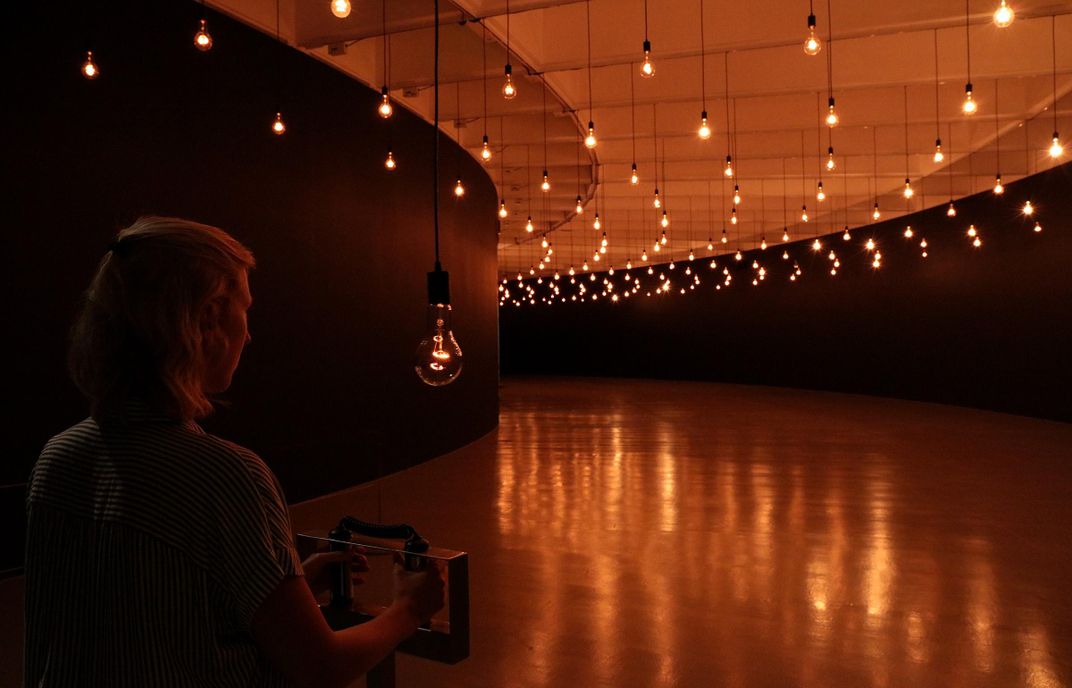
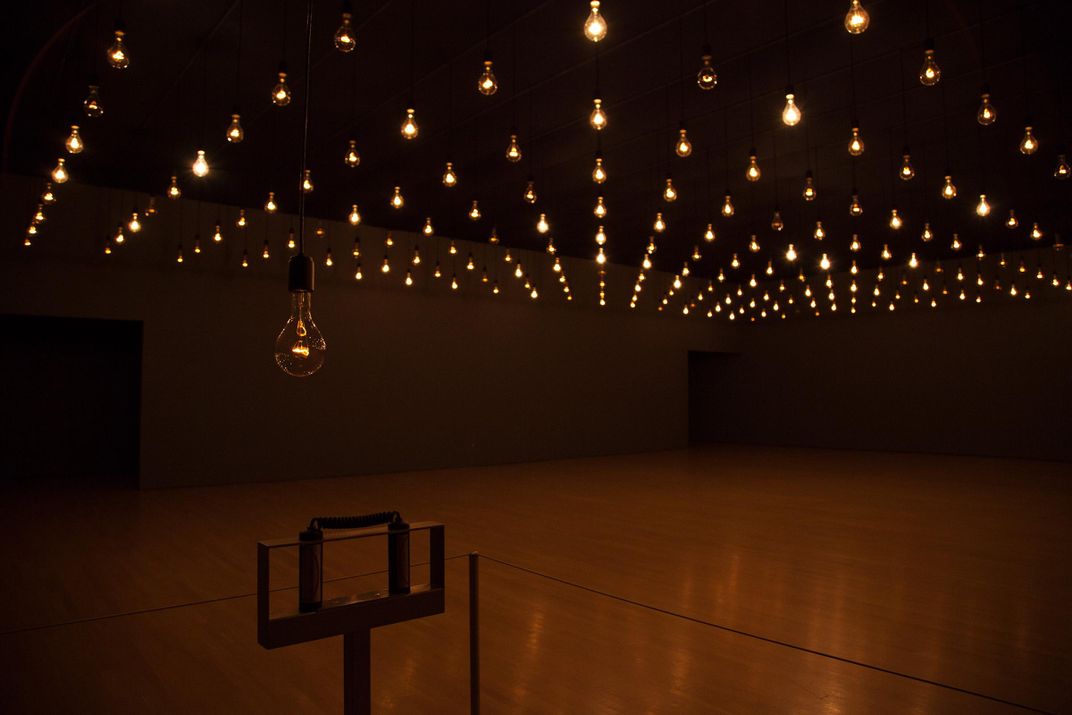
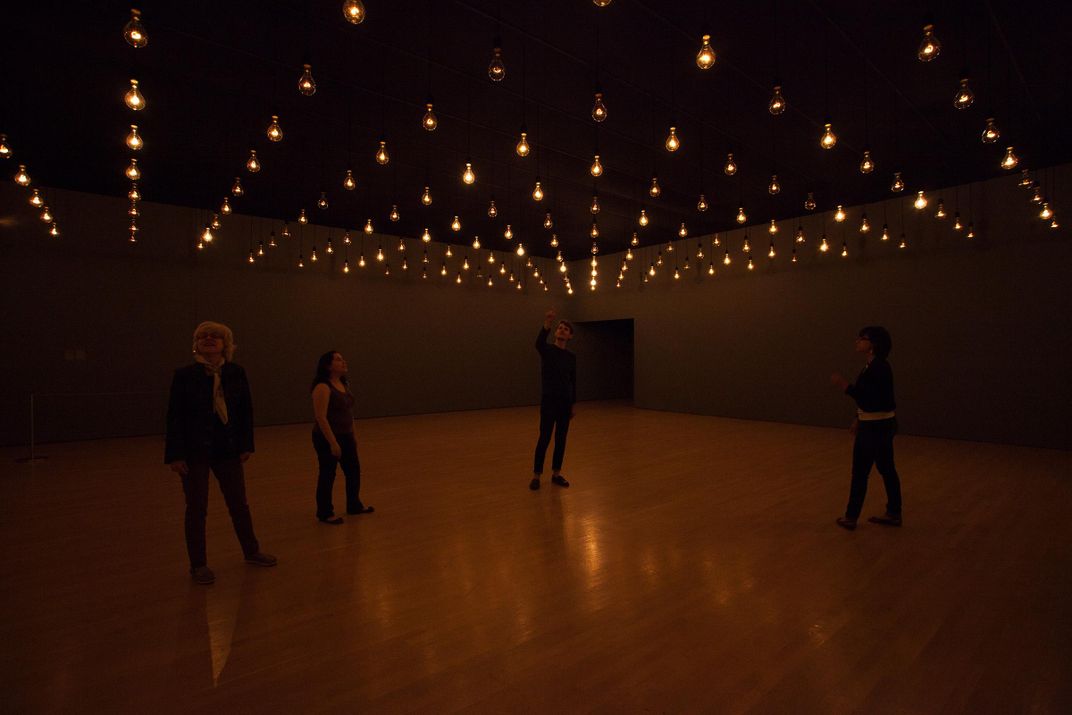
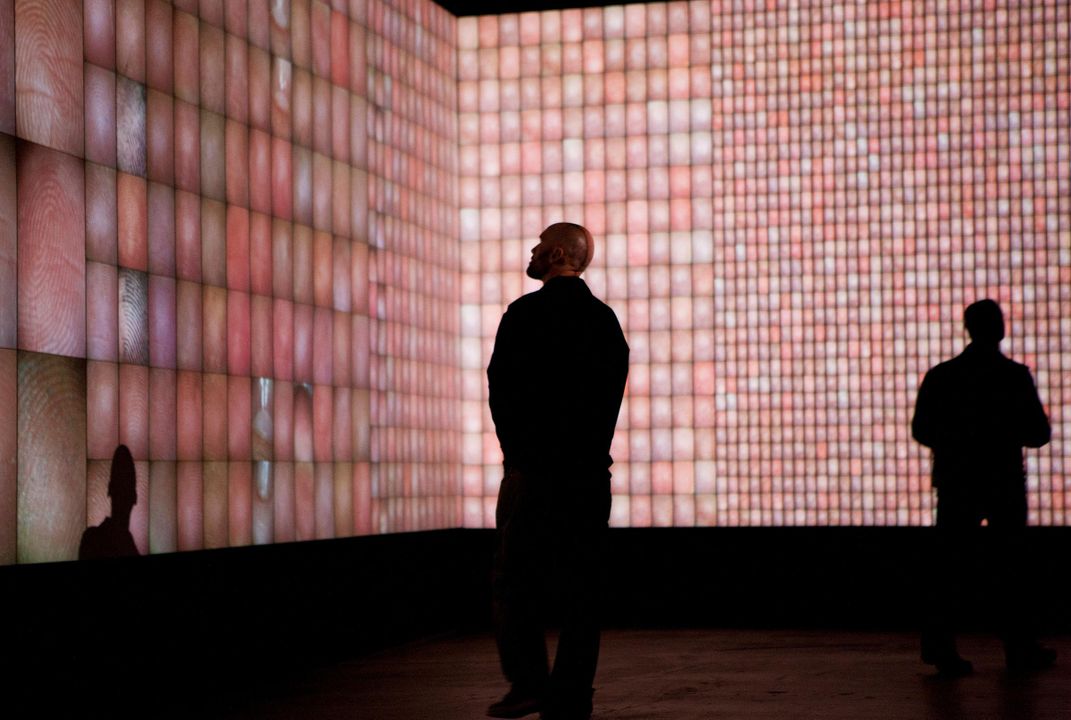
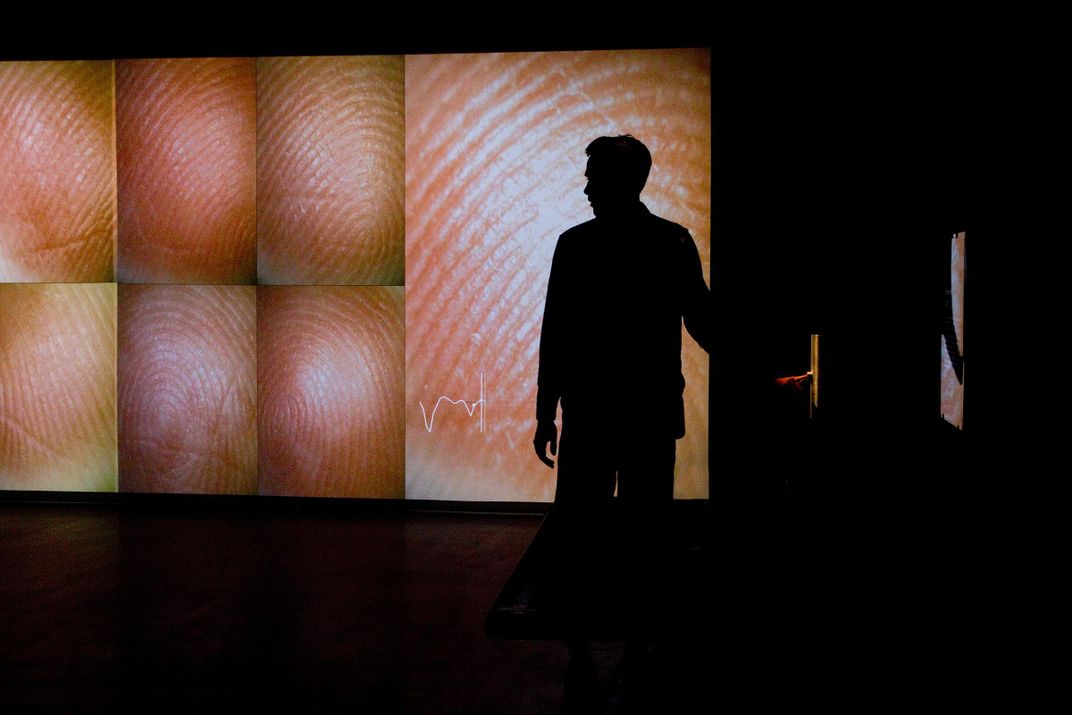
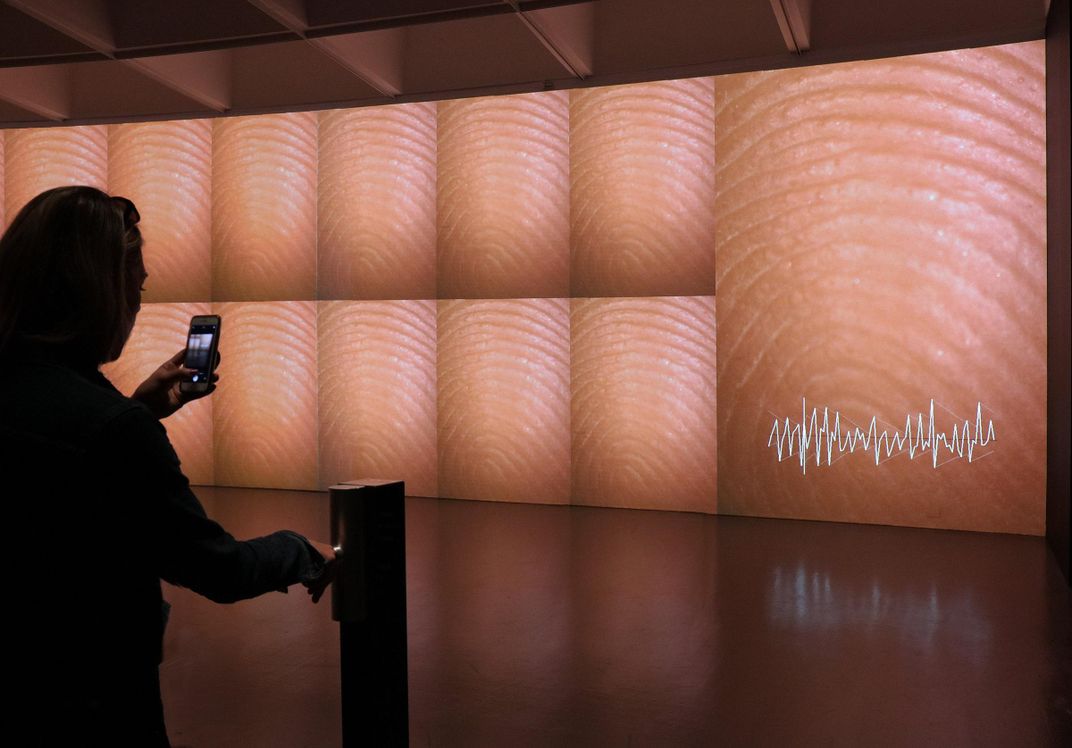

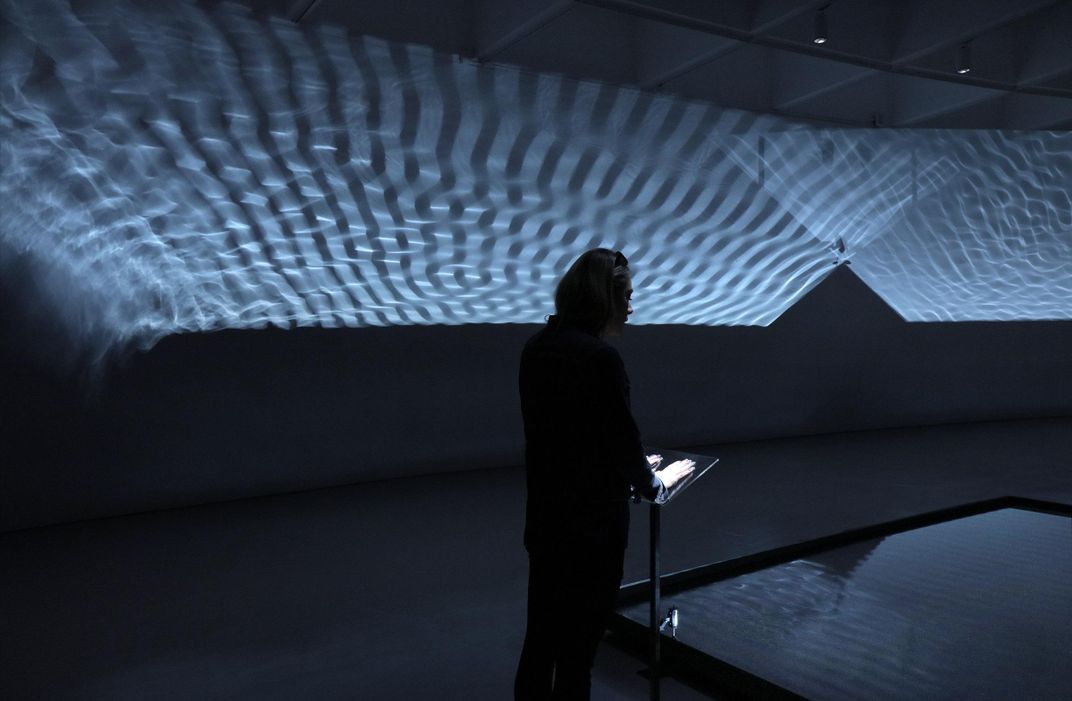
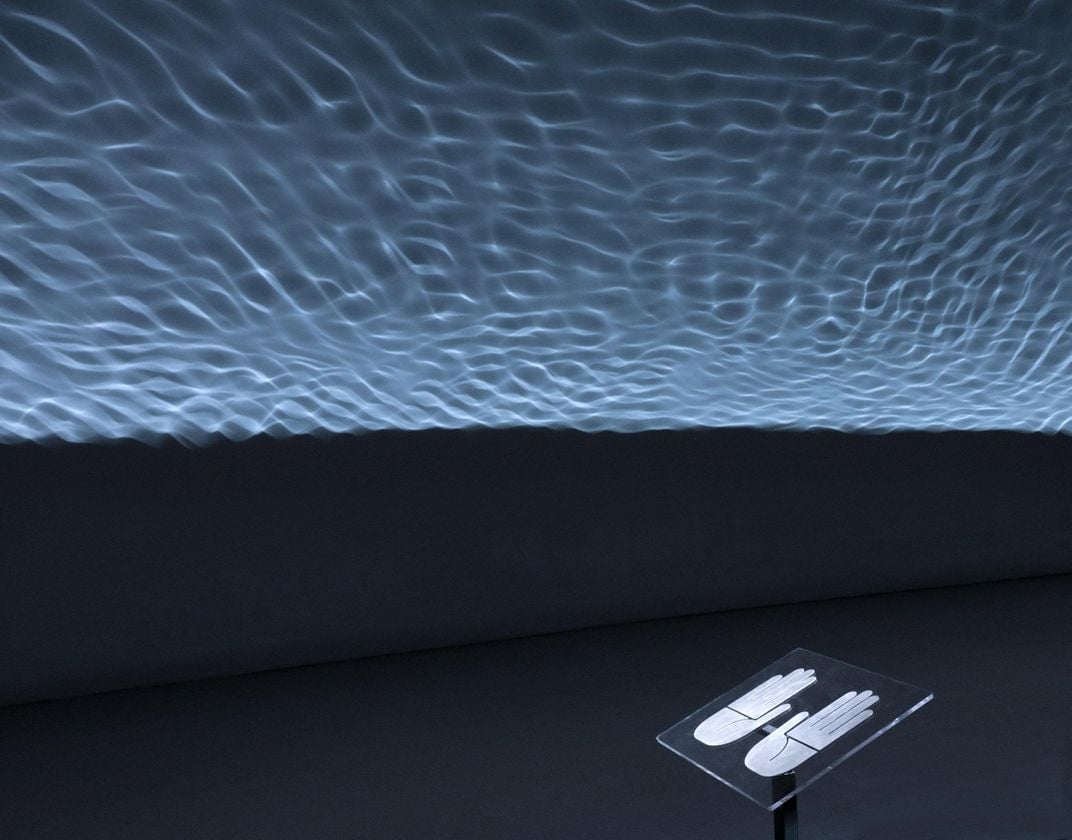
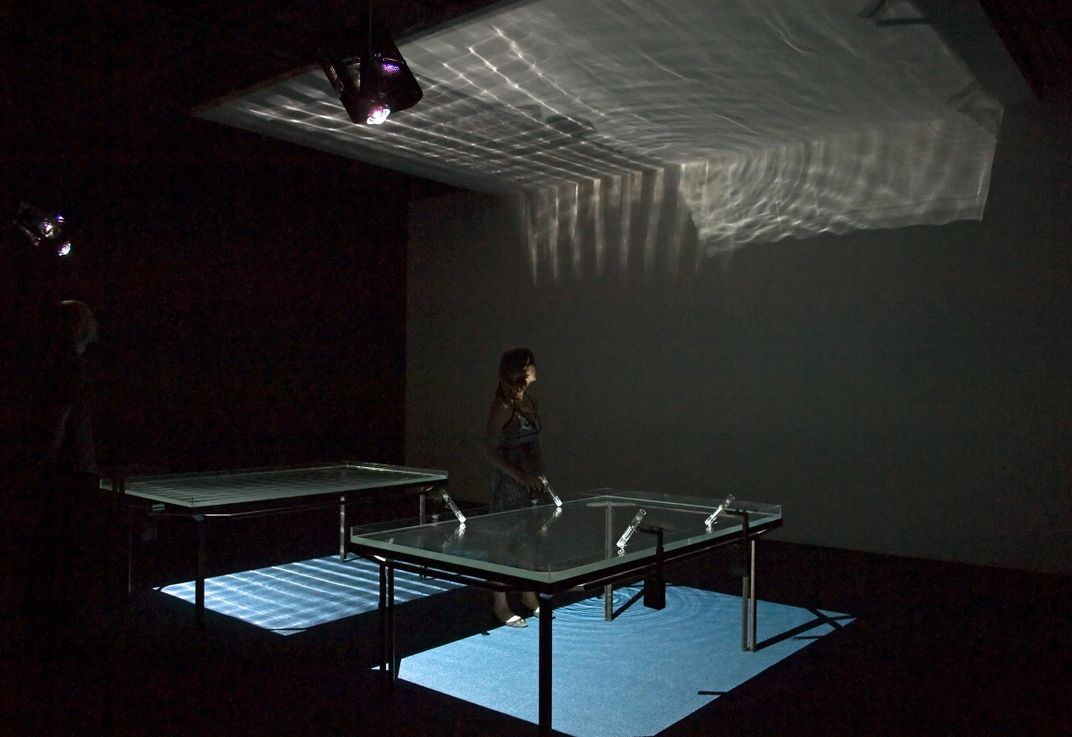
/https://tf-cmsv2-smithsonianmag-media.s3.amazonaws.com/accounts/headshot/RogerCatlin_thumbnail.png)